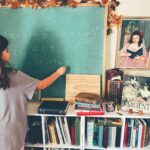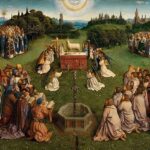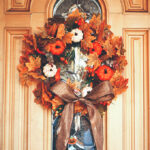Logos in a Time of Unreason
By Jay

“Maternal Caress” by Mary Cassatt 1896
One of the best organization tips I ever implemented in my homeschool is writing a nightly list of the next day’s readings and subjects. These are things she can do on her own. e.g. copywork, two assigned readings, a written narration, math or Greek review. Even so, our homeschool day still very much feels like a family event every day—questions, oral narrations, spontaneous discussions, cooking, arts and crafts, outings. It feels like I spend most of my day deep in the work of mothering and education. I’m usually spent by nighttime, which is precisely when I have to write out the next day’s tasks. (Doing it nightly, as opposed to weekly, is supposed to help you keep realistic expectations for what can be accomplished the next day.)
On one such night this week, I sat down to write out the next day’s tasks. And it just felt so… heavy? I think the feeling is common around this time of year. We’re about halfway done with the school year and the weather has been dreary. I just felt like we needed a lighter day. So I turned the page in the notebook and started a NEW list.
Poems
Dance
Reading (Julia’s choice)
Math Antics Youtube
Reading (Mom’s choice)
Botanic Garden
The following morning, I made oatmeal. My kids like it with cream, cinnamon, maple syrup, and banana. I like to add peanut butter to mine. I mention what we had for breakfast because it cooks slowly on the stove, which gives me some time to set up our morning readings. I had two New Testament readings for the week in my schedule. I asked them if they wanted to hear the story of Jesus Healing a Man Born Blind or the story of the Good Shepherd. They requested the former, John 9: 1-41.
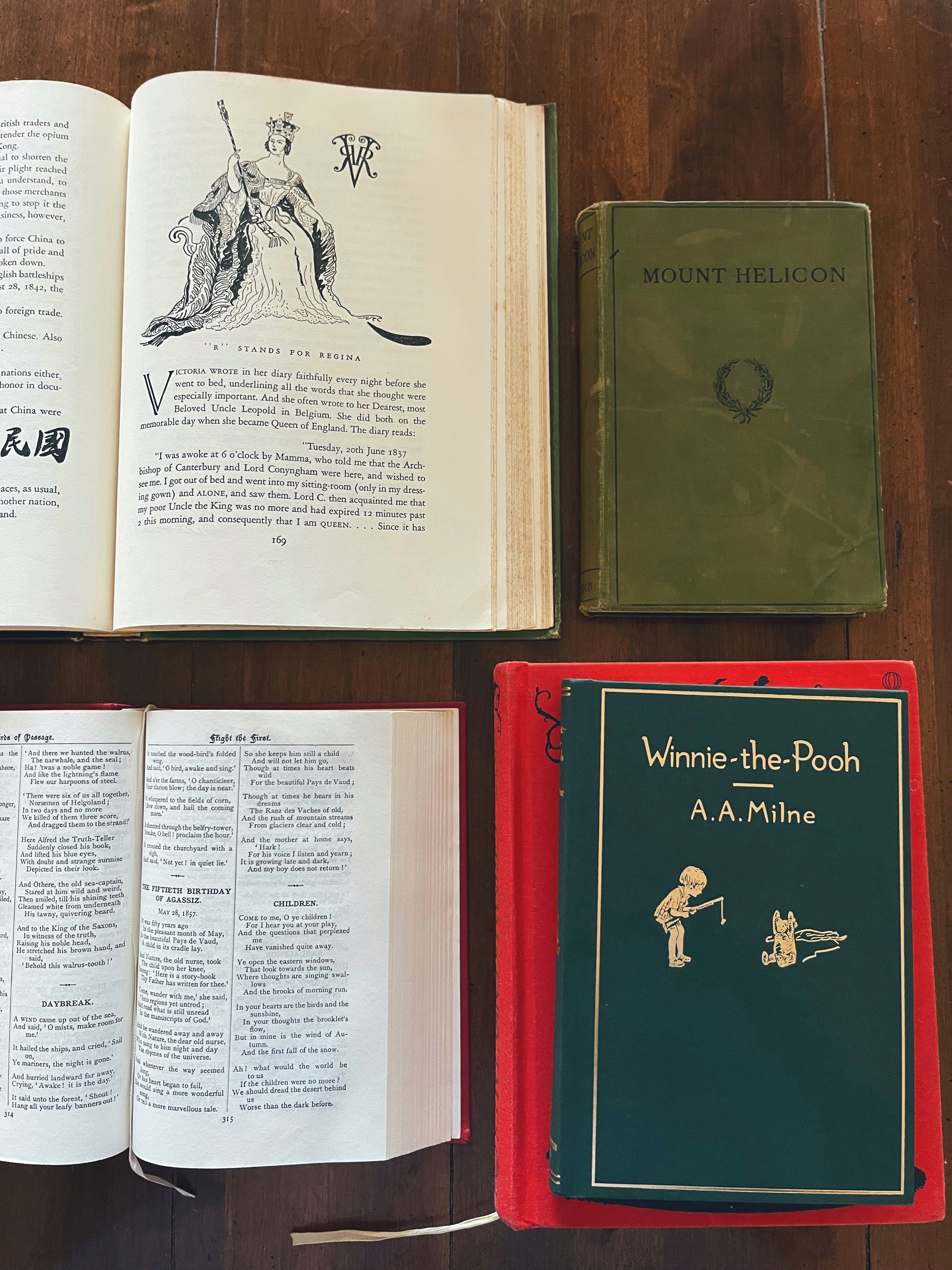
Books for Sara and Julia
Our discussion was SO interesting and lasted most of breakfast, but we did get a few poems in—two, by Longfellow—including this one about what the world would be like without children. It’s impossible to not be moved by if you have a child or remember being one. What a marvelous poem to consider alongside Charlotte Mason’s education philosophy and her thoughts about the God-given personhood of children. Longfellow suffered some tragic losses in his life, ending up a widower and father to young children. Read his poem, below.
Children
Come to me, O ye children!
For I hear you at your play,
And the questions that perplexed me
Have vanished quite away.
Ye open the eastern windows,
That look towards the sun,
Where thoughts are singing swallows
And the brooks of morning run.
In your hearts are the birds and the sunshine,
In your thoughts the brooklet’s flow,
But in mine is the wind of Autumn
And the first fall of the snow.
Ah! what would the world be to us
If the children were no more?
We should dread the desert behind us
Worse than the dark before.
What the leaves are to the forest,
With light and air for food,
Ere their sweet and tender juices
Have been hardened into wood,–
That to the world are children;
Through them it feels the glow
Of a brighter and sunnier climate
Than reaches the trunks below.
Come to me, O ye children!
And whisper in my ear
What the birds and the winds are singing
In your sunny atmosphere.
For what are all our contrivings,
And the wisdom of our books,
When compared with your caresses,
And the gladness of your looks?
Ye are better than all the ballads
That ever were sung or said;
For ye are living poems,
And all the rest are dead.
—
I found this poem by flipping through my Longfellow book, a treasured leather-bound edition that John gave me a few Christmases ago. It ended up being the perfect poem because it so happened that we’d studied, just the week prior, Mary Cassatt’s gorgeous painting, Maternal Caress (at the top of this post.)
Anyway! So you can get a sense of our morning:
After breakfast, Julia chose two readings from her Abraham Lincoln and Anatomy books. Meanwhile, Sara picked her own stack of books for me to read to her I snuck in a little reading practice for her too. This took about 30 minutes.
After readings, both girls danced around the living room. Maybe about 15 minutes.
Then Julia picked some math videos from her favorite mathy Youtube account, Math Antics. She picked PEMDAS (an old favorite of hers) and a new one (for her) about ratios. Julia did some practice problems while Sara colored. About 20 minutes.
Next, the girls played together for a while. I used that time to get dressed and prep lunch. Today: scrambled egg, cheddar, and avocado sandwiches on toasted sourdough.
As it got closer to noon, I knew it was time for my readings. I pulled Julia aside and read aloud a chapter from Oliver Twist by Charles Dickens and opened up one of our logic books. I wrote about our study of logic in my super-long post about math. Today we’d be starting a new section about fallacies. Sara sat with us for a while, although she runs in and out to play during my longer readings and sometimes tries to pull Julia away.
Julia said to Sara, “I can’t play with you right now, I have to go do logic.”
Sara, who is five, asked, “What is logic?” Both girls looked at me.
Imagine the Oppenheimer soundtrack playing in my mind for a few seconds!
I said, reflexively, “Well, it comes from the Greek word ‘logos’ which means word. It can also mean thought or reason. Logic is the art of reason.”
Then, a stroke of lightning in my mind: “Ah! But you’ve encountered Logos before…” A google search produced this on my phone and Julia read it for us in Ancient Greek. (My heart!)
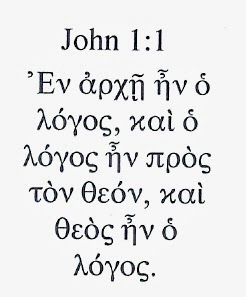
Can I just quickly say I’m soooo amazed and proud she showed interest in Ancient Greek this year? It’s HARD. I provided the translation of this verse in English: “In the beginning was the Word, and the Word was with God, and the Word was God.”

We discussed Jesus being the LOGOS, the perfect Logos. We circled back to the Bible reading from the morning (John 9: 1-41) and talked about some impressive logos sparring at the end of that reading. (The connections?!?!?) Then I said that although God is the perfect Logos, that there was a lot of imperfect and straight up bad logos out in the world—that’s why we study fallacies.
Excuse me??? (This SEGUE?!?!?!?)

We finished our reading about fallacies, AD IGNORANTIAM, if you’re curious. Then, we broke for lunch, all done with the readings and lessons part of the day. All together, my readings were probably about 25 minutes. And maybe about 15 minutes of discussion was had about logic that day.
Over lunch, Julia spoke up suddenly, “Mom, you said something to me once about how you hadn’t planned to teach me logic this early except that we live in….what was it you said?”
“A time of unreason,” I replied.
After a short silence she said, “Was it always this way?”
“No,” I replied, trying not to reveal the sadness of having to admit that to a child.

Oppenheimer feels
Thankfully, Sara said something random that completely changed the subject and cheered up the rest of lunch (thank you Lord, for little sisters.)
I packed some snacks for our nature walk and everyone got ready for the outing.
We noticed so many early signs of spring in the garden: scents, birds, some Monarch butterflies, and a baby turtle sunning itself on one of the rocks in the pond.
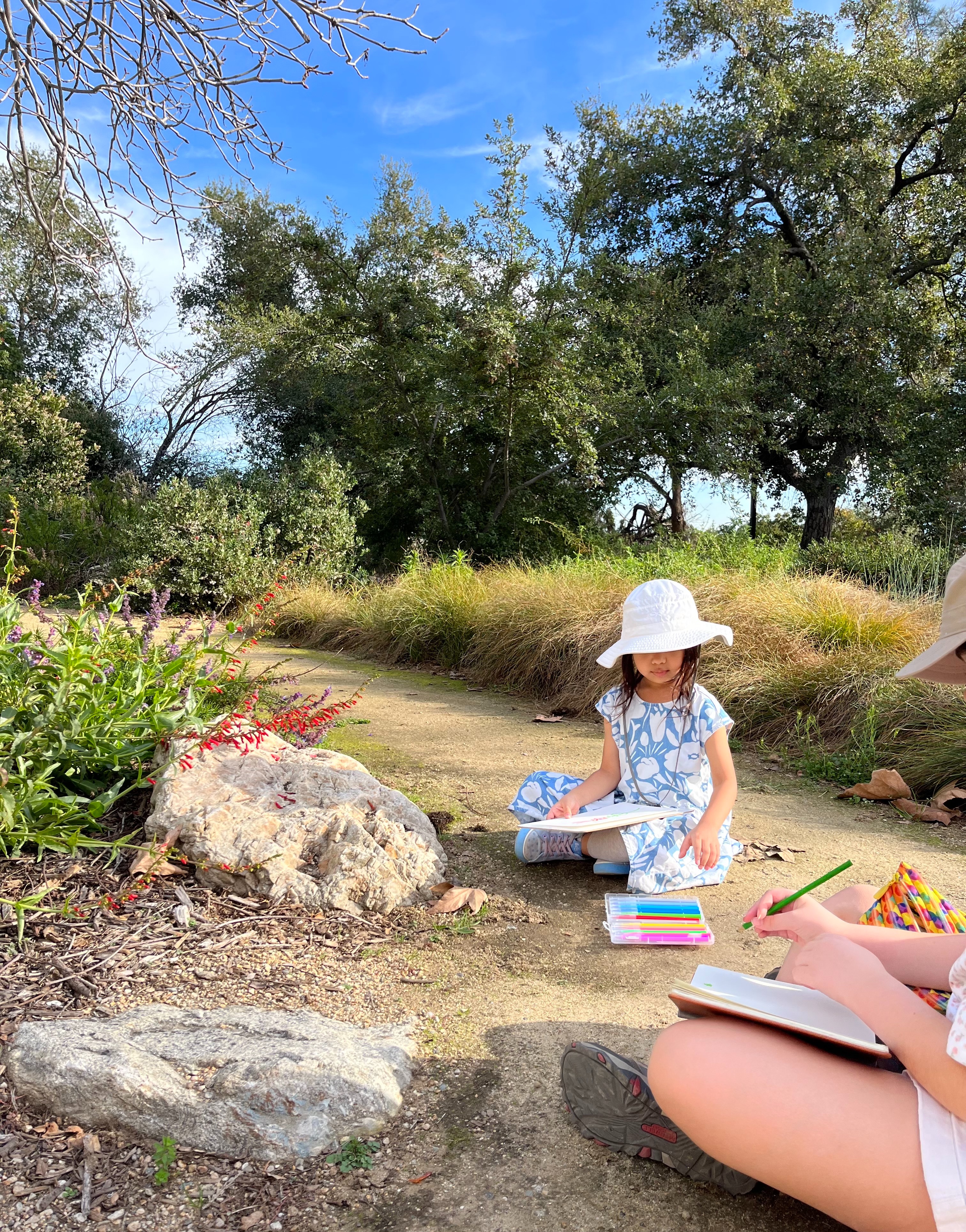
I always bring some notebooks/paper, watercolor pens, colored pencils in my backpack, so the girls got some nature drawing done. I also brought an Emily Dickinson poetry book, which I pulled out when we sat on a bench. The girls munched on Girl Scout cookies (Adventurefuls!) and narrated some of the day’s readings to me. Just so lovely! We spent about two hours at the garden.
We drove home with the windows down, listening to a Taylor Swift song the girls love, “Fearless.” The girls were singing in the backseat…
And I don’t know how it gets better than this.”
The wind was blowing in our hair. I was struck by the fact that I was living what was probably one of the best days of my life with my daughters. It involved so many disparate parts, so many things I hadn’t planned. And yet it was better than anything I could have planned. Oh, to be able to hold the schedule lightly.

I want to remember the day forever. So I had to write it down.
God is so great, He can reach down even into one’s ordinary life, a mundane midweek day, and turn it into something beautiful, mysterious, wonderful. I’d been feeling like our days were heavy. He made our day light.
Thank you, LOGOS.
The Language of the Universe
By Jay
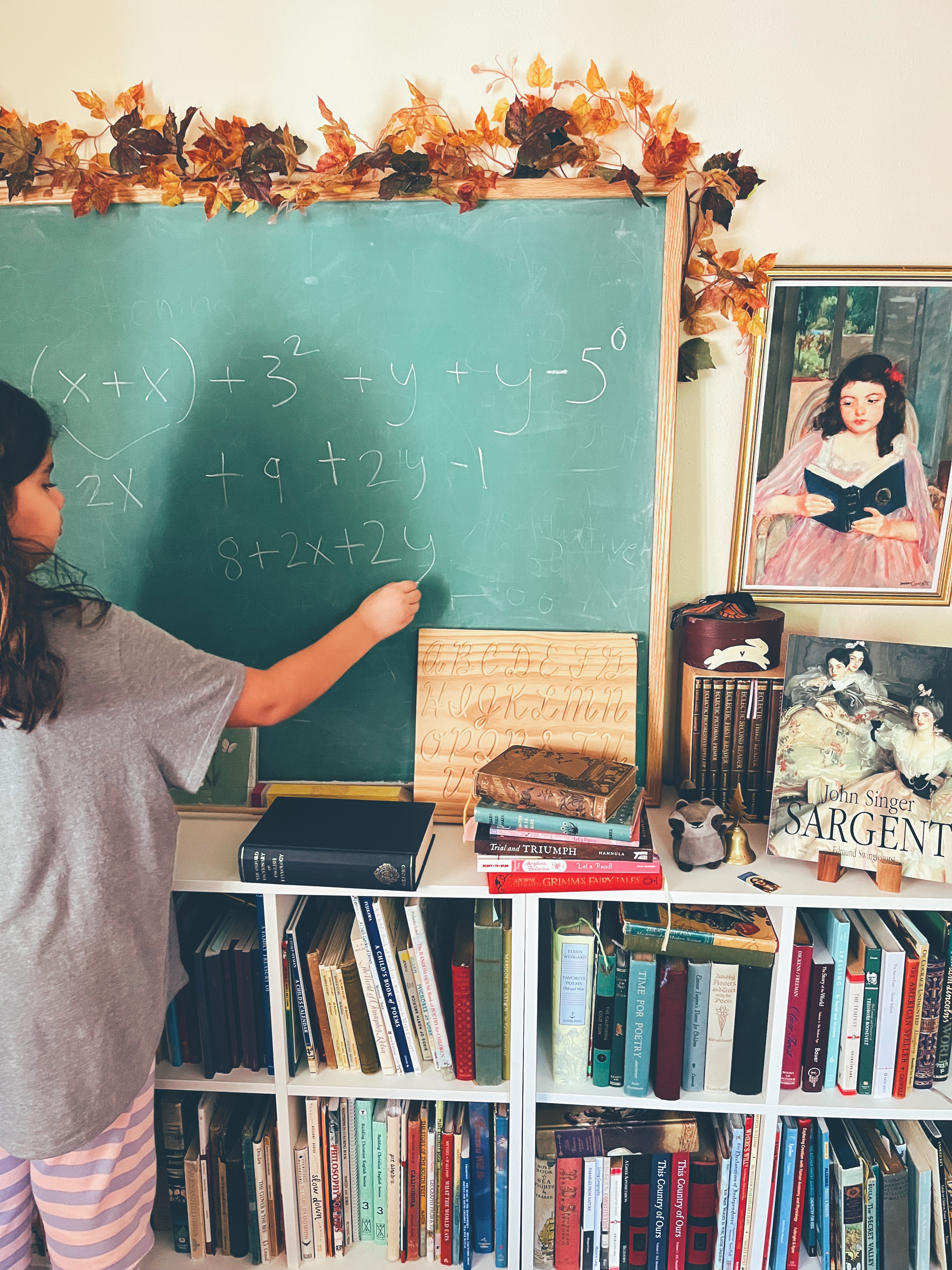
“Mathematics is the language in which God has written the universe.” – Galileo
My daughter is in 5th grade and this is our second year approaching math in a way I believe stands apart from most K-12 schools. It has led to some interesting developments, including declarations of, “Math is my favorite subject!” and “Can you pleeeeease tell us another math puzzle?” Let me tell you a bit about how we got here.
We left public school four years ago. (My goodness!) That’s when I first encountered the debates in math instruction (e.g. direct instruction vs. discovery, spiral vs. mastery.) I narrowed our curricular choices and went with one textbook that did a great job of explaining place value. It came with manipulative blocks and instructional videos; it was a great blend of support and hands-on learning for our 2nd grader (at the time) and for me as a new homeschooler.
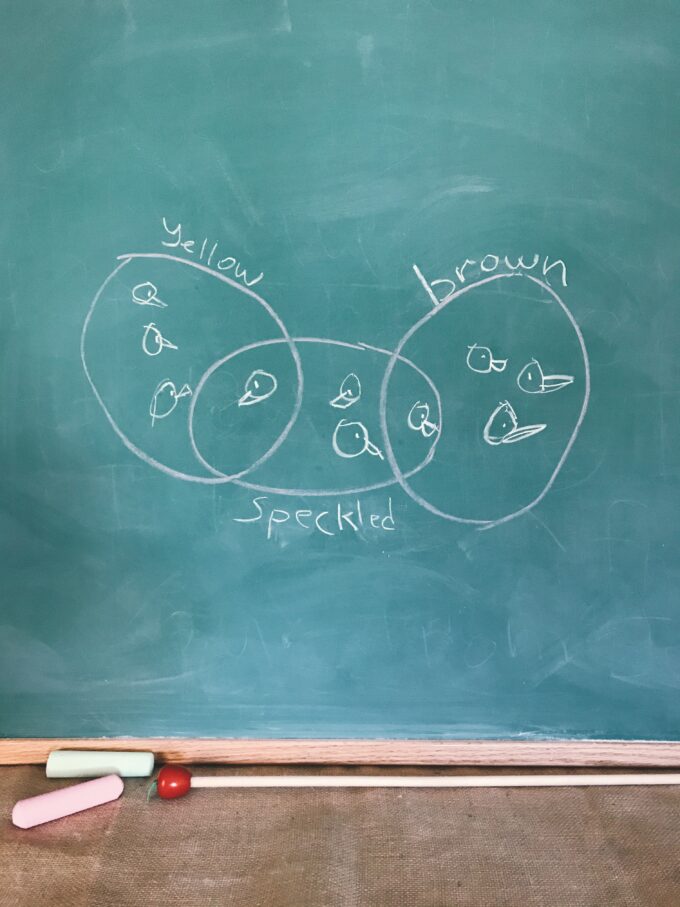 Ten chicks have I. Four of them are yellow, Four of them are brown, Four of them are speckled. The nicest in the town.
Ten chicks have I. Four of them are yellow, Four of them are brown, Four of them are speckled. The nicest in the town.
Fairly quickly into our homeschooling journey I started reading about education philosophy and discovered the works of the early 1900s British educator Charlotte Mason. I started implementing as I learned the methods and optimized as I deepened my study. Mason’s method calls for a wide feast of subjects to be presented to children. These include Bible, poetry, literature, history, art, music, nature study, math, science, ancient and modern languages. Short lessons and student narration are brilliant tools. All together, these do form a beautiful feast of ideas.
To use modern education parlance, this is a knowledge-rich curriculum. Mason’s principles are over a hundred years old and will take you far but there are still areas for you as the educator to fill in, e.g. choosing your own phonics programs, supports for students with special needs, math curriculum, etc.
I kept reading and implementing. Over time, I came to three major math realizations:
1. A Mason-inspired math approach works very well for teaching new concepts. First, I introduce a new concept with concrete examples (manipulatives or household items) to show how a concept works. Example: Let’s slice some apples into quarters and then eighths and add the pieces using fractions—then we’ll eat them. Next lesson, move up one level of abstraction. Example: let’s draw some apple slices on the board and learn to write the fraction. The next lesson will move up another level of abstraction. Example: A problem set that includes questions like 3/4 + 3/4 = ?
2. Number sense isn’t glamorous but math facts are building blocks of math. Putting in the practice/memory work here will lead to more automaticity and fluency in math. It’s going to be harder for a kid to multiply fractions if much of their mental load is taken up by trying to figure out basic multiplication. This doesn’t mean drilling mindless memorization. Games make learning math facts fun.
3. Math is beautiful and it must be taught as such. I can’t imagine Mason would have accepted math educators who approached math with disdain, which includes treating math like a chore. It seems at the very least, math should have a proper place in the “feast” of ideas we set before children. I was using a solid math curriculum but I had been treating math like a one-a-day vitamin; it was necessary, but not savored. I was not sharing the beauty of math as well as I could. When I changed this, everything changed.
Suddenly, math was a far more delectable part of the education feast.
I started to keep an eye out for interesting math books whenever I was in a used book stores. I started collecting recommendations from mathy moms. Right around this time Julia started playing chess. She also started asking me for more “thought puzzles” which I base on old law cases. She’s 10 now and we seem to have hit our stride when it comes to mathy subjects and critical thinking. Now that I think of it, it may not be a coincidence that this happened the same year she’s been working on an Ancient Greek language code cracking book; I believe the part of the brain that learns a new code/language overlaps with the part that does math.
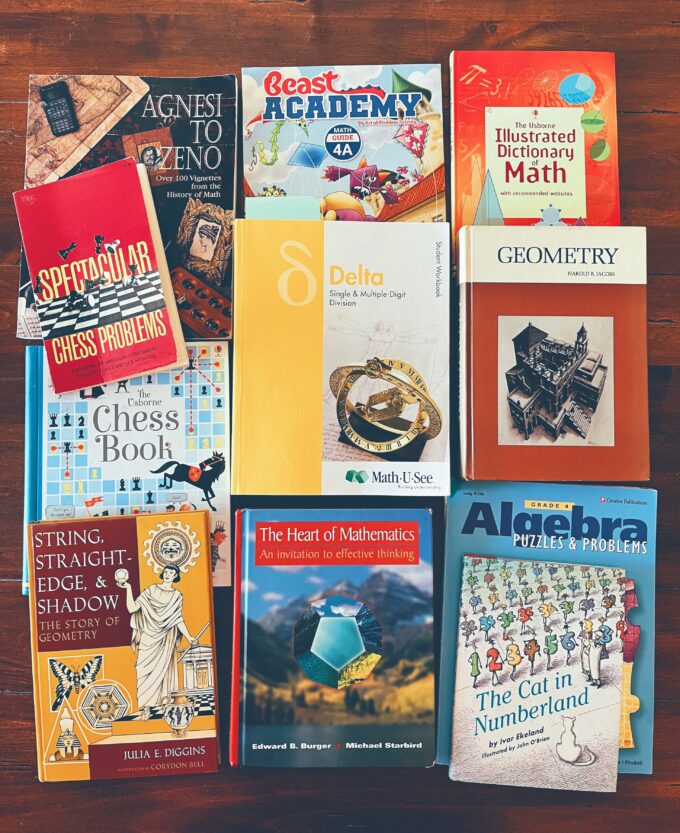
A week of math now looks like:
- Doing math from our MUS “Epsilon” book, 3-4 days a week. Note: this is an old photo with last year’s Delta book from the same publisher.
- Logic games (more on this below)
- A selection from our Algebra and Geometry books 2-3 days a week.
- Playing math. E.g. Kicking a soccer ball back and forth and practicing mental math.
- Reading interesting, well-written books about math as read-alouds.
- Working on chess problems together (great for reasoning and doubles as chess practice.) “Spectacular Chess Problems” is excellent.
- Discussing a math puzzle or “older” math concept. These can take a couple days to work out! A princess is trapped on an island surrounded by a square moat that measures 20′ across. A knight has two 19′ beams. This one led to so many questions before she found the answer!
- Math games — just for fun, not assigned
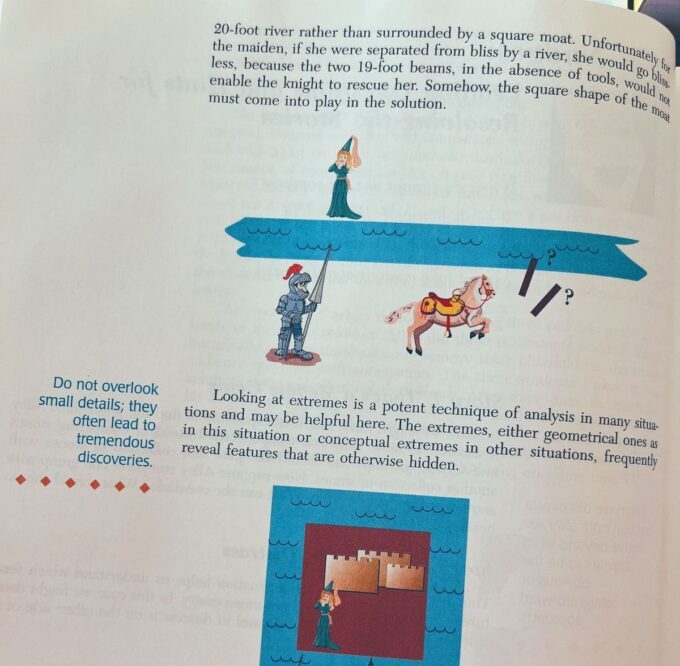
From Heart of Mathematics.
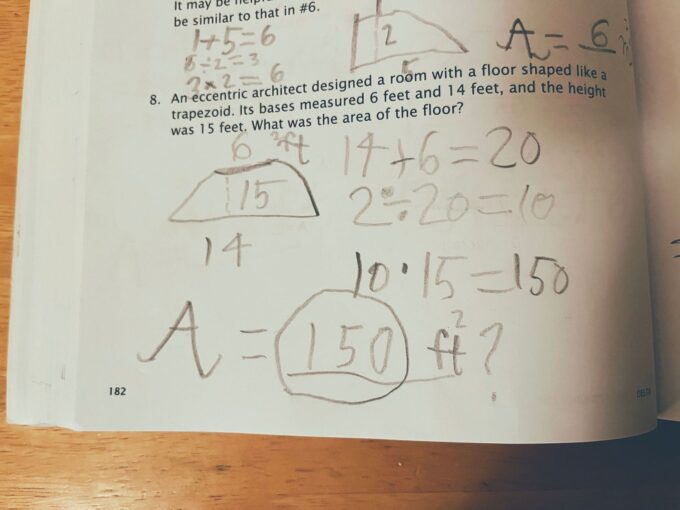 From Delta workbook
From Delta workbook
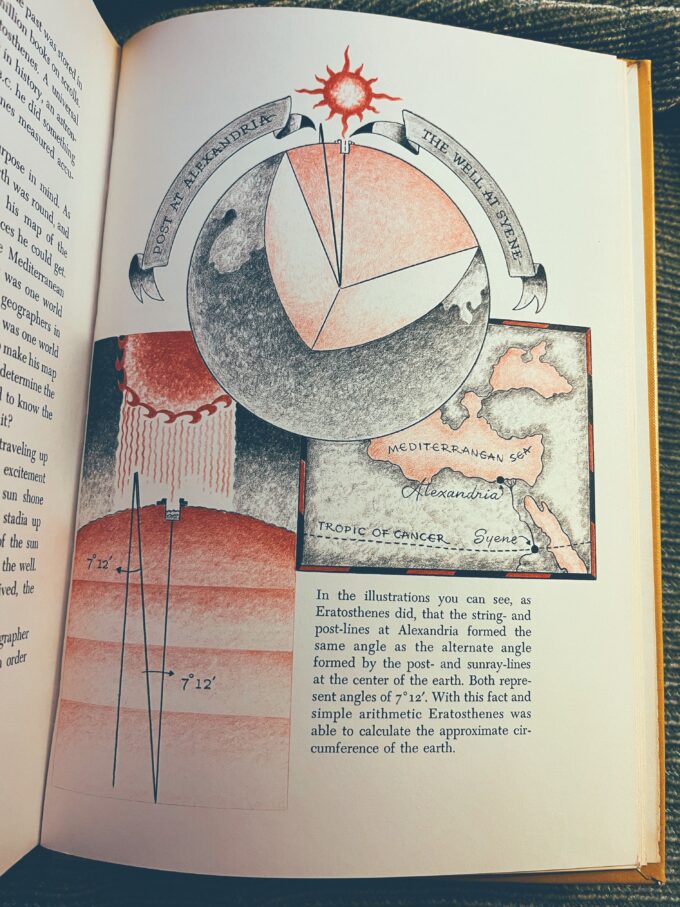 From Story of Geometry
From Story of Geometry
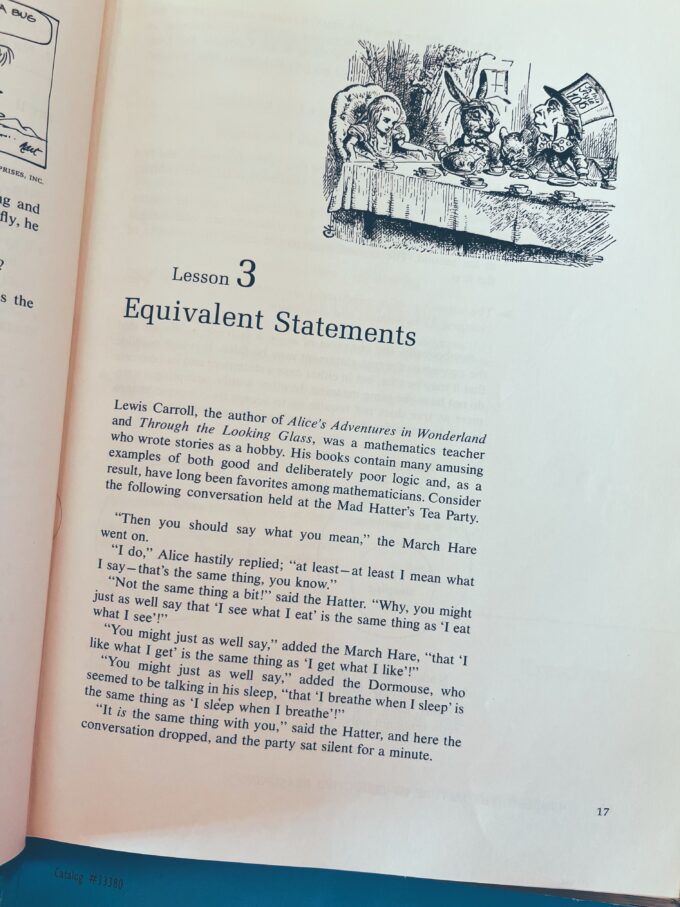
The above is from our Geometry textbook which has a nice long introduction on logic and reasoning. She recently learned about Euler diagrams with this book.
Allow me to get a bit romantic for a second. I have fond memories of taking formal logic at UC Berkeley, where I graduated with a degree in Philosophy. If you’re familiar with the campus, the classes were in the Hearst Memorial Mining Building. The lecture hall there is airy and oak-lined and our professor was wonderful. I just can’t help but be nostalgic as I draw familiar shapes on the board for my daughter. I met my husband at Berkeley, so there’s no Julia without Berkeley. I’m grateful for all the echoes in our lives of that special place and there lessons learned there.
Anyway! Euler diagrams can look like this. My first example to her was A->B; “If I’m riding the teacups, then I’m at Disneyland.”

She understood the validity and invalidity of the converse, contrapositive, and inverse, even though she doesn’t know those terms yet.

Why a child can understand logic or math concepts that seem “beyond them” is beyond me. But I believe reason is one of the many gifts from God. An introduction to logic has enabled her to work on logic puzzles that I give her. I was a bit hesitant about this because Charlotte Mason cautioned against too great a focus on analytic thinking in early education, favoring “synthetic,” connection-making, thinking instead. However, I feel we live in an age of unreason; we must equip our kids with the ability to think with clarity, discernment, and elegance.
I spent this whole post discussing math with my 10-year-old, but we “play math” with my 4-year-old too. No workbooks, just play, hands-on stuff, and beautiful books which occasionally include numbers. She enjoys NumberBlocks on Netflix (awesome show!) She loves counting and picked this as her favorite book last summer:

As I traverse this piece of the universe with my kids, I will try my best to marvel at the beauty of numbers and logic alongside them. Here are some quotes that got me thinking more about math education.
Quotes that got me thinking more about math education…
“Pure mathematics is, in its way, the poetry of logical ideas.” – Albert Einstein
“Children have a birthright to knowledge about God, man, and the universe.”- In Vital Harmony by K. Glass, a book about Charlotte Mason’s education philosophy
“Math is objectively true, good, and beautiful. Math doesn’t change, but I can. So I can come to appreciate math and conform my perception to reality more and more.” – Schole Sisters podcast #98 Ordo Amoris
“Mathematics is the language in which God has written the universe.” – Galileo
“Euclid alone has looked on Beauty bare.” – Edna St. Vincent Millay
“I am quite convinced; and, believe me, if I were again beginning my studies, I should follow the advice of Plato and start with mathematics.” – Galileo
“The child may learn the multiplication-table and do a subtraction sum without any insight into the rationale of either. He may even become a good arithmetician, applying rules aptly, without seeing the reason of them; but arithmetic becomes an elementary mathematical training only in so far as the reason why of every process is clear to the child.” – from Home Education, Vol. 1, Section 15 Arithmetic by Charlotte Mason
“The principality of mathematics is a mountainous land, but the air is very fine and health-giving, though some people find it too rare for their breathing. People who seek their work or play in this principality find themselves braced by effort and satisfied with truth.” – Charlotte Mason

Spring Pastel Trend
Recently, River Island contacted me to see what I thought of their spring lineup. If you’re a longtime reader of my blog, you know I’ve featured them before. I feel inspired by the spring trends for 2014, especially pastels. The sweet hues at River Island remind me of carefree strolling, sunny days, and two-hour lunches….

Twenty-Nine
I’m turning 29 next week and I feel it. I thought I would dread being so close to 30, but as I’ve written about lately, getting older is… kinda awesome. I feel like I’m drawing closer and closer to the woman I want to be—as a mom, wife, professional, and my own person. Here are…

How to Wear Mixed Prints
In the pictures I’m wearing some pieces from the Evans x Clements Ribeiro collaboration. Their prints were gorgeous, though much is sold out. I personally think Evans is underrated—I’ve found some amazing things there over the years. Mixed prints are super stylish, but can be confusing. These are a few principles I try to follow…

All is Lost
Because I feel moved to share inspiring experiences with you, today I’m writing about the film All is Lost, written and directed by J.C. Chandor and starring Robert Redford. Some films are pure fun, some technical marvels, and others are quiet and devastating. All is Lost falls into the last category. Robert Redford described working…
- « Previous Page
- 1
- …
- 41
- 42
- 43
- 44
- 45
- …
- 72
- Next Page »
